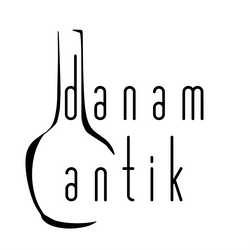Thorkild Osvald Olsen (July 7, 1890 in Glumsø - April 30, 1973 in Frederiksberg) was a Danish painter and ceramicist who worked with both faience and porcelain. He was the father of the architect Jørgen Selchau.
Thorkild Olsen was the son of master tailor Ole Peder Olsen and Kristine Jensen, graduated in 1906 and became a student at the Royal Porcelain Factory under Arnold Krog in May 1908. He attended the Technical School and the Academy of Fine Arts from January 1911 to January 1914.
Olsen was employed at the Royal Porcelain Factory from 1908. Porcelain Factory from 1908, head of the Juliane Marie department, the overglaze painting department, chief painter 1918 and teacher at the School of Arts and Crafts 1926-29.
Thorkild Olsen became an important partner for Nils Thorsson in his revival of Aluminia. Later, Olsen became a key figure in the establishment of Den kgl. Porcelainsfabrik's world reputation. He worked with both modeling and decoration, especially over- and underglaze painting, and he contributed to the development of glazes. In his early works, such as a series of craquelé porcelain pieces from the 1920s, the decoration in iron red and gold is naturalistic, often with botanical motifs. Later he became preoccupied with stylizing the decoration, which eventually became pure abstraction based on the observation of nature, which played an important role for him.
His starting point was always naturalism. The abstract ornament, also used in woodcuts and fabric prints, Olsen used in the 1950s for works in soft porcelain with decorations in the old Chinese pourpre de chine glaze, which was recreated in the late 1940s, and for decorations with bleu royal glaze. His late works are experiments in blanc de chine, with cuts and reliefs that emphasize the transparency of the mass.
Thorkild Olsen received the K.A. Larssen Legat 1925 and 1937, support from the Reiersen Foundation 1925, silver medal at the World Exhibition in Paris 1925, Laur. Andersen 1935, Diplôme d'honneur at the World Exhibition in Brussels 1935 and in Paris 1937, H.H. Bruun and Højesteretssagfører C.L. David's Grant for Family and Friends 1958.
He is represented in the Royal Copenhagen Museum, the Danish Museum of Decorative Arts, Museum of Modern Art, New York, Musée des Arts Décoratifs, Paris and Museo Internazionale delle Ceramiche in Faenza.
He was married for the first time on June 12, 1920 in Frederiksberg to the ceramist Ellinor Selchau (January 12, 1899 in Svendborg - December 12, 1986 in Kongens Lyngby), daughter of gardener Anton Selchau and Margrethe née Thellefsen. The marriage was dissolved and he married a second time on July 9, 1938 in Frederiksberg with language teacher Berthe Christensen (October 16, 1913 in Paris, daughter of sales manager at Rouard, later director of Den kgl. Porcelainsfabrik Christian Vilhelm Christensen and Else Sachs.




